FOLK AND CUSTOMS
These images have been chosen to offer a route into thinking about English customs and traditions. Selected by resident photo specialist, Caroline Benson, they highlight just some of the material in the MERL collection connected to the theme of Folk. Some of the history behind each image is explored by Dr Ollie Douglas, Curator of MERL Collections.
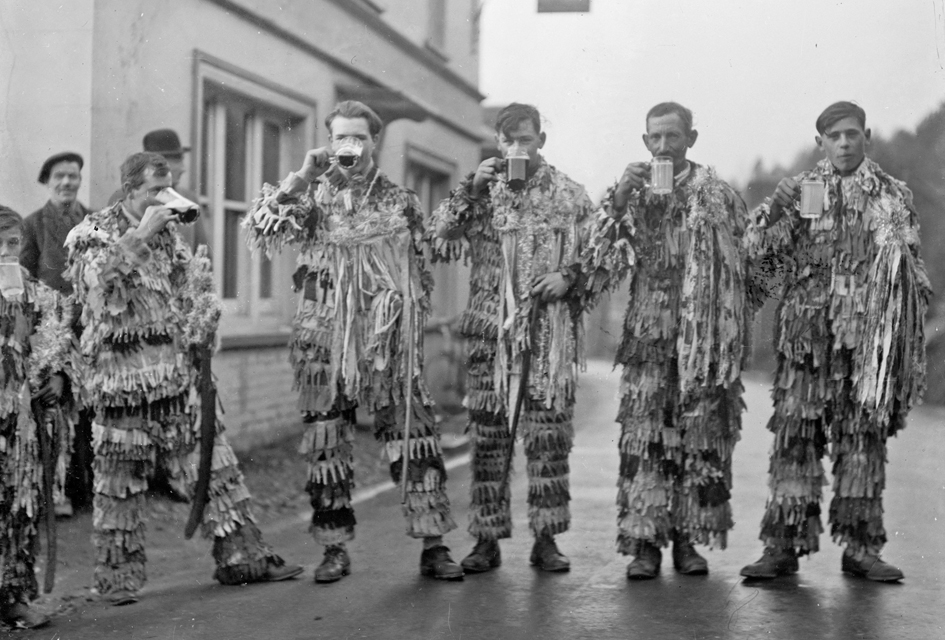
Long Parish Mummers
This photograph shows the Longparish Mummers of Hampshire. There are many different mumming plays, performances, and traditions throughout England. Here the so-called ‘seven champions of Christendom’ (one must be out of frame) feature in a play in which they cross wooden swords.
A Hampshire mummer’s rag costume and sword survive in the collections of the Folklore Society, currently held in the Museum of Cambridge. The MERL holds a copy print of a nineteenth-century photograph of these same objects in its archive.
Along with many of the other images in this online exhibition, this photograph is from the collection of George Long, whose book The Folklore Calendar is available in the MERL Library.
George Long Collection, P DX357 PH1/202
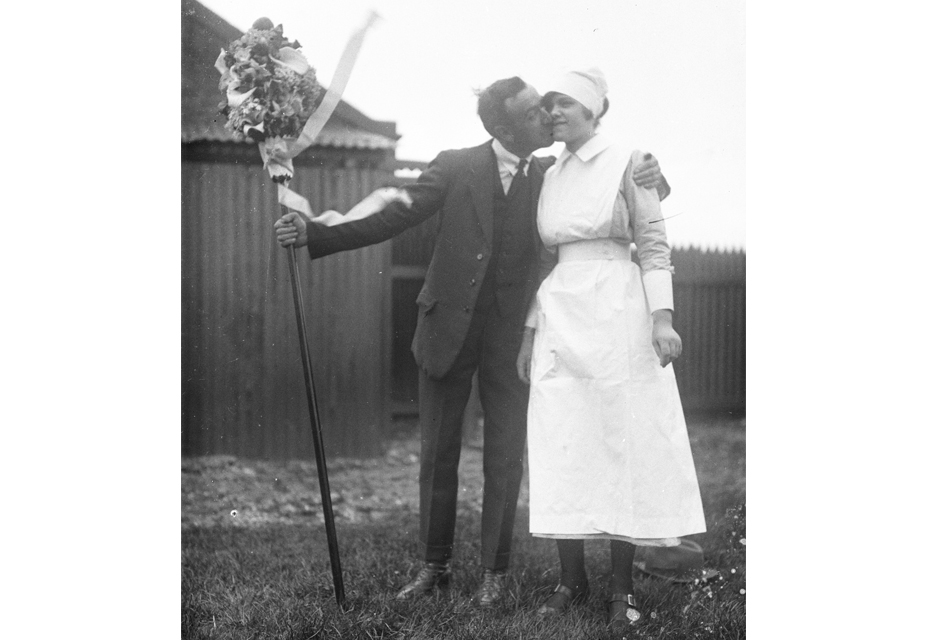
Hocktide at Hungerford
This shows a couple taking part in the Hocktide celebration at Hungerford, Berkshire. Hocktide was a widespread calendar custom that took place on the second Monday and Tuesday after Easter. It now only survives in this one location. One common practice during this event – on ‘Binding Monday’ – was for women to capture men, tie them with ropes, and refuse to set them free until they paid a ransom.
In this image we see one of two elected ‘Tutti-men’, each of whom carry a pole adorned with a garland featuring ribbons and an orange on top. The Tutti-men have the right to insist on a kiss from all the women of the town or to fine those who refuse. As George Long records, ‘their first call is at the Workhouse, where they distribute tobacco, snuff, and oranges among the old folks, and kisses galore for the pretty nurses.’
George Long Collection, P DX357 PH1/164
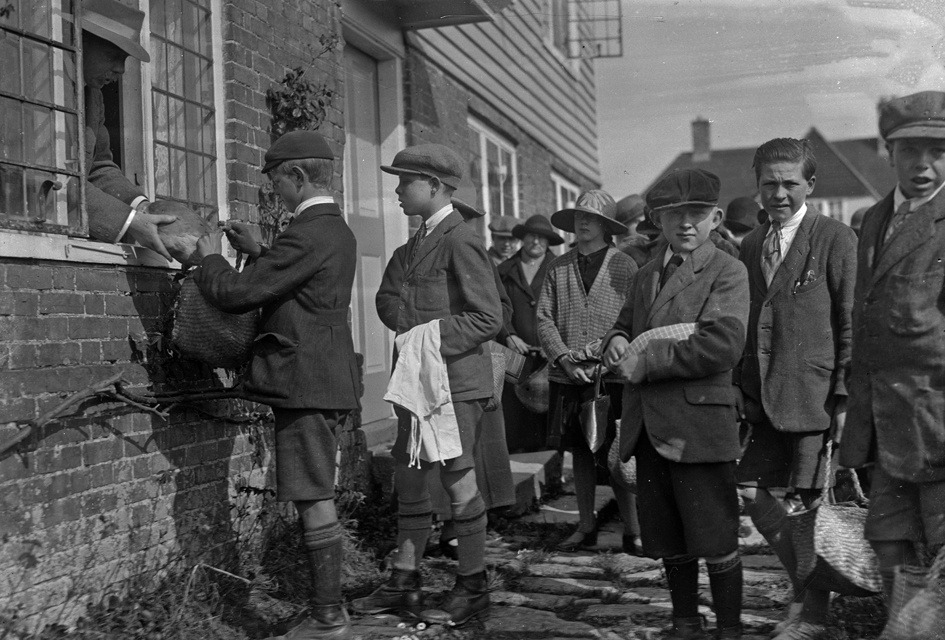
Biddenden Dole
This photograph shows the distribution of the Biddenden Dole of bread, cheese or Biddenden cakes on Easter Monday in Biddenden, Kent. Biddenden cakes represent just one of the many regionally-specific ceremonial cake traditions of England.
These particular ‘cakes’ are really more like hard, inedible biscuits. They are handed out during a charitable dole said to have been founded by the conjoined twins Eliza and Mary Chalkhurst in the 1100s. Although this story has been largely discredited, it offers a powerful example of how food and folklore become intertwined with particular local traditions.
One baking mould from our collection, now on display in our Collecting the Countryside gallery (MERL 51/536 – see this old blog for details), bears a striking resemblance to Biddenden cakes, although it probably shows a King and Queen and not the Chalkhurst twins.
George Long Collection P DX357 PH1/90

Dance of the Deermen
Here we see six dancers dancing the famous Abbot’s Bromley Horn Dance accompanied by two musicians. This unique calendar custom takes place every year in Abbot’s Bromley, Staffordshire, on the Monday following the first Sunday after 4 September. Like many other traditional English dance performances, as well as the dancers and musicians, the event also features a fool, a Maid Marian, a hobby horse, and a Bow-man.
Most of the other character costumes – including the medieval-style clothing worn by the musicians shown here – probably have their roots in the 19th century but the ‘horns’ carried by the six dancers are much older. The earliest written record of the custom itself dates to 1686. However, the ‘horns’ are actually reindeer antlers and reindeer have been extinct in England since before the Norman conquest. Radiocarbon dating undertaken in the 1970s suggested these particular antlers date to somewhere around the 11th century CE.
The MERL is about to acquire work from artist Dave Pearson’s English Calendar Customs series, some of which depict the Abbot’s Bromley Horn Dance.
George Long collection P DX357 PH1/265

Helston Furry Dance
This photograph shows scenes from the Furry Dance, a community and collaborative event that takes place on 8 May in Helston, Cornwall. The dancers are members of the local community and they process through streets and even into people’s houses, accompanied by musicians playing the Furry Song or Furry Dance Tune.
Different dances take place throughout the day. 7 o’clock in the morning sees the earliest event, during which people heading to work get the chance to perform in their ordinary clothes (this is probably what we see in this image). Later on comes the Children’s Dance, and finally the Twelve O’Clock dance features people wearing bright big hats and summer dresses, and top hats and morning suits.
Although it is open to all, social stratification is evident in the separation of people by age and of working people from those free to dance at midday. Indeed the early procession was formerly referred to as the Servants’ Dance.
George Long collection P DX357 PH1/248
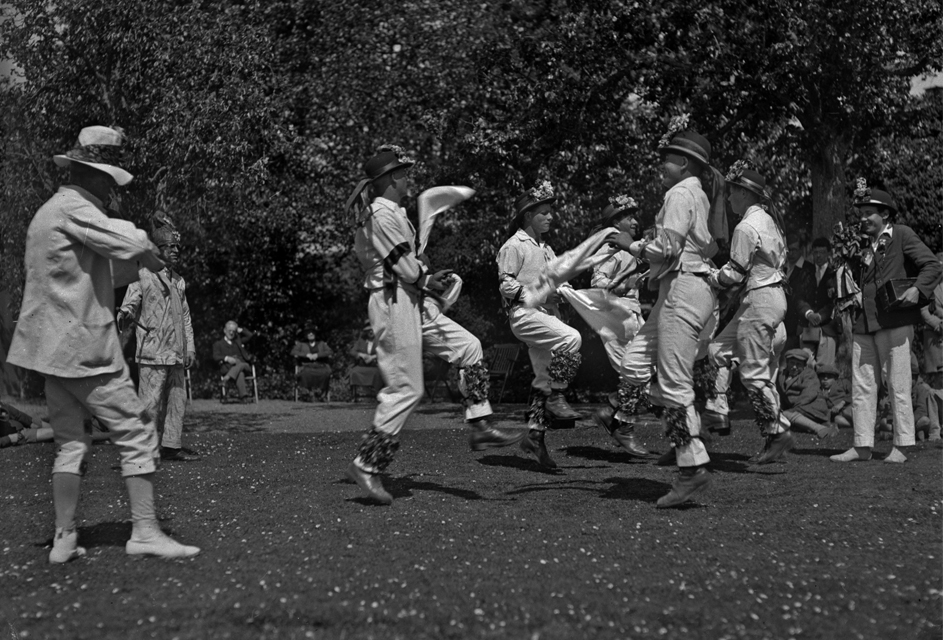
Morris Dancing, Bampton
These Morris dancers from Bampton, Oxfordshire, are part of a troupe that boasts one of the longest running unbroken traditions of this type of performance in England. They dance ‘Cotswold’ morris, which usually involves six men dressed in white, carrying white hankies, with bells on their shins, and flower-trimmed hats.
The writer George Long noted how a local told him that the group could trace their history back five hundred years. Village traditions record various different histories that claim a range of longevity that varies from 200 to 600 years but the earliest known reference to Bampton Morris dates to 1847.
The folk revivalist and collector Cecil Sharp played a part in helping to maintain a century-plus of unbroken tradition by including Bampton dances in one of his books on Morris dancing. The headquarters of the English Folk Dance and Song Society are named after him.
George Long collection P DX357 PH1/279
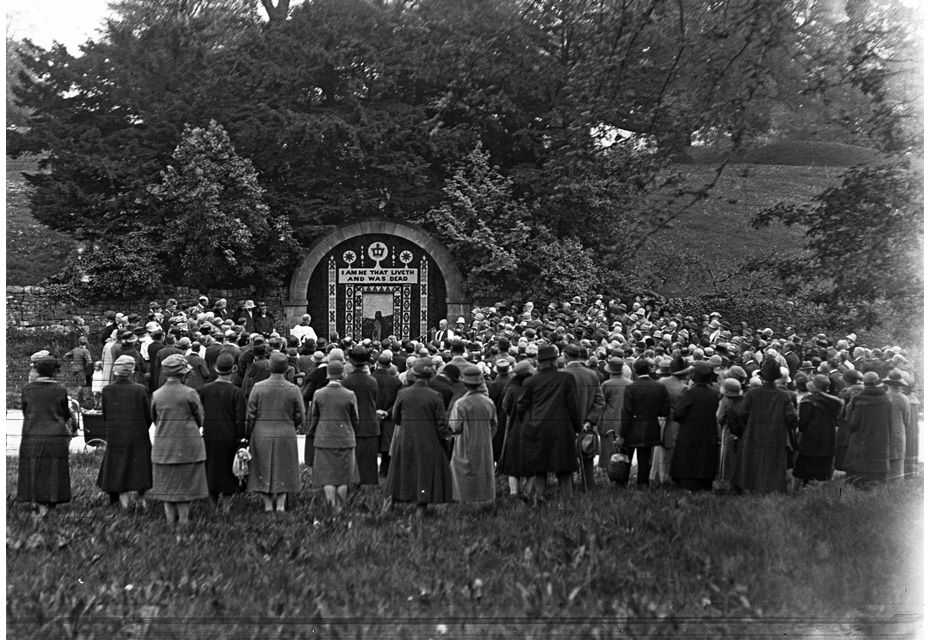
Well-Dressing, Tissington
In the village of Tissington, Derbyshire, well-dressing takes place annually on Ascension Day. This is a thanksgiving for the purity of water from the five wells in the village and, through its erection of highly decorated boards and extensive crowds, represents significant communal effort. The boards are coated in clay, covered in nails, and painstakingly adorned with a pattern of cones, seeds, berries, sticks, petals, moss, and leaves.
Some claim that this ritual dates back to the fourteenth century when the village was reputedly spared from the Black Death but the history of this calendar custom is not altogether clear. What is certain is that water sources like wells and springs have long been considered important sites for veneration and celebration, and have been commonly marked through acts of deposition or decoration, for many hundreds (if not thousands) of years.
George Long collection P DX357 PH1/330
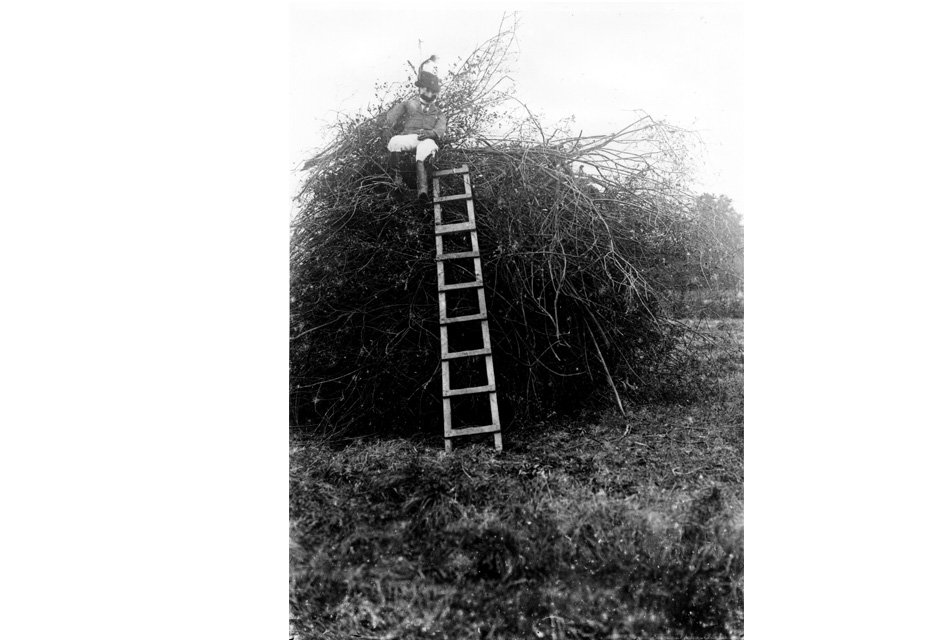
Bonfire, Lewes
This ladder has presumably been used to place the Guy on the bonfire, ready for Guy Fawkes night, November 5th, in Lewes, Sussex. Lewes still holds one of the largest and most famous bonfire night festivities in the country. This event shares its origin with other festivities designed to recall the infamous, treasonous plot of November 1605. The fact that the plotters were Catholic later gave rise to anti-Catholic acts and the burning of papal effigies.
Our modern traditions may have shifted away from a religious focus but the Bonfire Societies of Lewes – each representing a particular locale – now create ‘Guys’ that bear a striking resemblance to well-known figures, often politicians or celebrities.
George Long collection P DX357 PH1/178
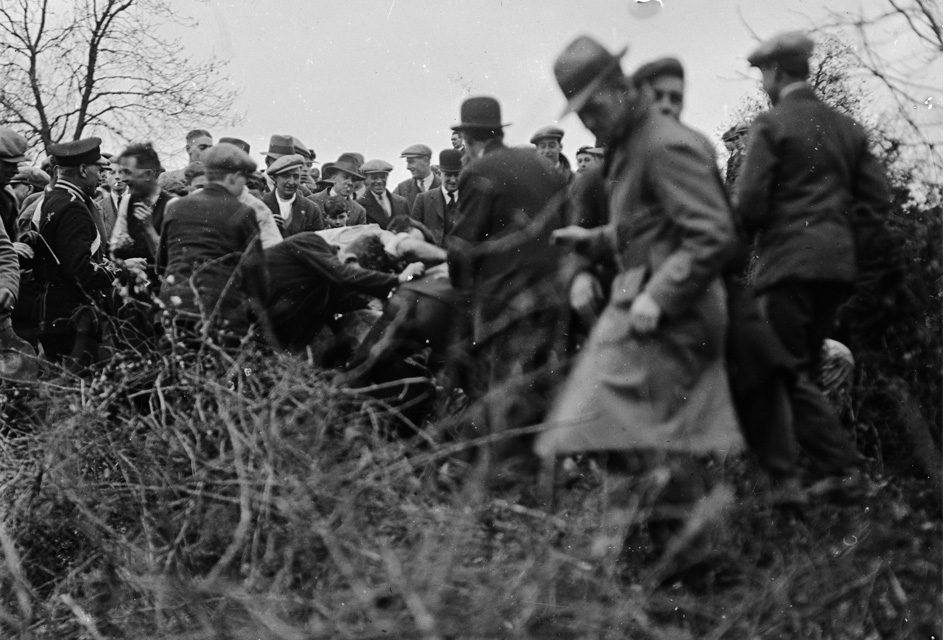
Hallaton Bottle Kicking
This image shows bottle-kicking underway in the village of Hallaton, Leicestershire. This custom comes immediately after the church service on Easter Monday, which sees the local rector bless three small kegs (two of which contain beer), and afterwards cut and distribute pieces of hare pie.
The bottle-kicking itself is essentially a game of ‘rough football’, whereby two sides compete to get their ‘bottle’ of beer-filled keg to one of two streams, which lie about a mile apart. The third, empty keg is used if there is a tie. The kegs are rarely kicked in spite of the name.
George Long collection P DX357 PH1/135
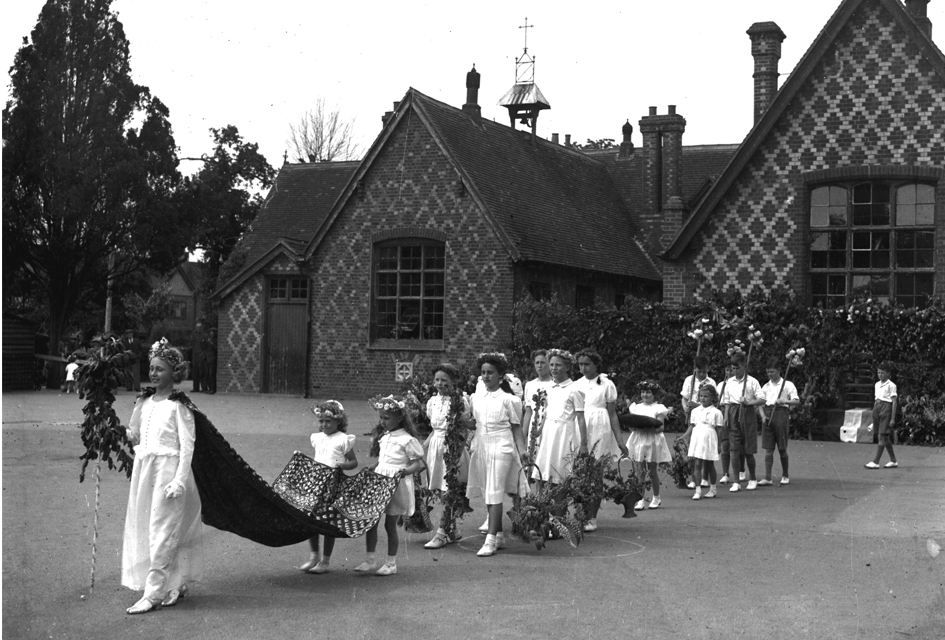
May Queen celebrations
This photograph by local photographer Phillip Collier shows the May Queen and other children carrying flowers to celebrate May Day, a ceremony that many of us are familiar with to some extent.
As revealed here, in an old blog post by our Head of Curatorial and Public Engagement, Isabel Hughes, our personal experience of participating in such events can play an important part in recreating their sense of history and tradition.
This ceremony is essentially a nineteenth century creation yet harks back to earlier practices and rites. In this sense it is a perfect example of what the historians Terence Ranger and Eric Hobsbawn, in their 1983 book of the same name, called The Invention of Tradition.
P.O.Collier collection P DX323 PH1/M28/127
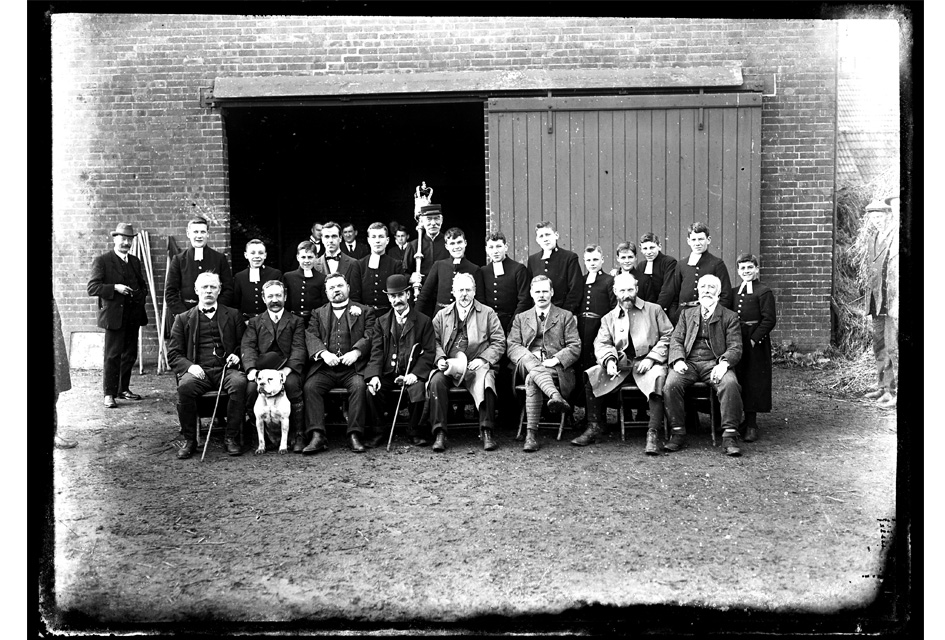
Beating the bounds
This image was taken by local photographer Phillip Collier and in his caption he describes it simply as the “beating the bounds group.” The custom of beating the bounds harks back to when the parish was an important unit of both church and government organisation. A representative group from the community, usually including clergymen and secular leaders, walked the edges of the parish as a way of marking and maintaining boundary rights.
The fact that both boys and men feature is important. Children were brought along to ensure that knowledge of the boundary was passed from one generation to the next, as well as to ensure that awkward stages in the boundary – streams, hedges, and other obstacles – could be easily followed. Some customs involved beating the boys as a means of ensuring they remembered what they had been shown.
One ceremonial stick in the Museum’s possession offers a powerful example of a modern revival of this tradition. It was utilized in a charity event in 2009 where it was used to ‘beat the bounds’ of Berkshire (but not its children!).
P.O.Collier collection P DX323 PH1/M18/29
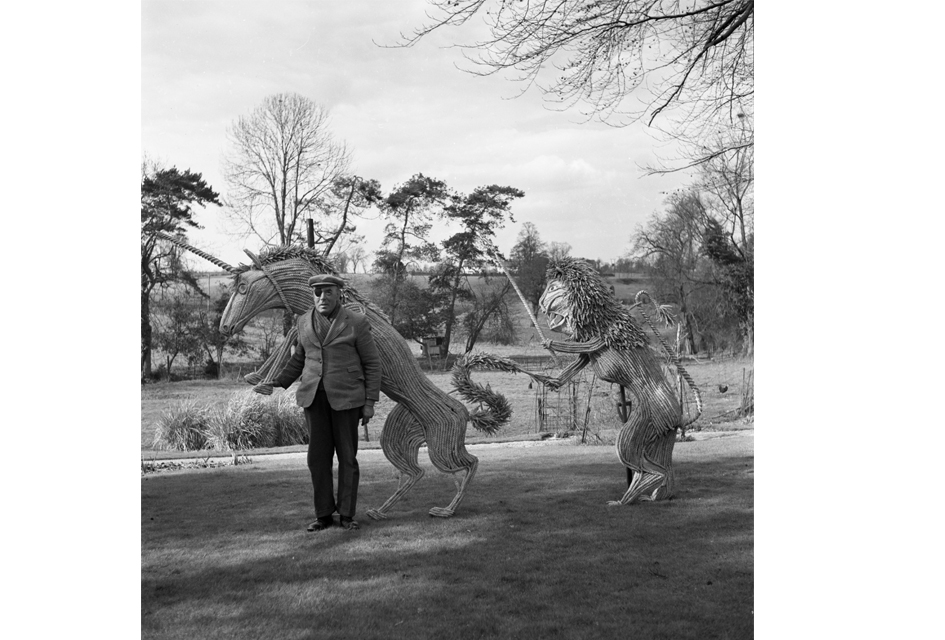
Straw effigies
This image shows Fred Mizen, a well-known twentieth century straw-craftsman from Braintree, Essex. Mizen is best known for creating the straw lion and unicorn sculptures shown here, which were designed for display at the Festival of Britain held in Southbank, London, 1951. Although these sculptures do not survive, a series of smaller pieces made by Mizen (some for display at the Festival of Britain) are now held by The MERL.
A few years ago, The MERL loaned some of Mizen’s work to Tate Britian for their British Folk Art retrospective. Straw-craft is often described as ‘folk art’ but this is a rather loaded term. Some English traditions arguably hark back to harvest customs involving corn ‘maidens’ or ‘necks’, others probably owe more to decorative finials made by thatchers and those stacking ricks, but the work of Mizen probably says just as much about twentieth-century craft revival and creativity.
John Tarlton collection P TAR PH1/3/3/7/1